-
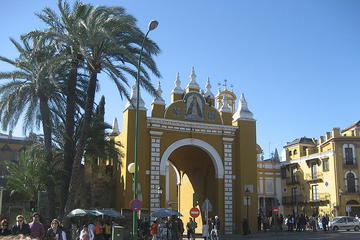 Basilica Macarena
Basilica Macarena The chief attraction of the Basilica Macarena is La Macarena, or the Virgin of Hope, a 17th century wooden sculpture of Christs mother mourning his death (complete with tears). Shes the patron saint of bullfighters, friend to gypsies and star of the Semana Santa parade held in Se
Basilica Macarena
Basilica Macarena The chief attraction of the Basilica Macarena is La Macarena, or the Virgin of Hope, a 17th century wooden sculpture of Christs mother mourning his death (complete with tears). Shes the patron saint of bullfighters, friend to gypsies and star of the Semana Santa parade held in Se
-
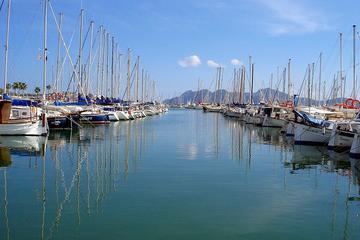 Formentor and Puerto Pollensa
Formentor and Puerto Pollensa With its beautiful white-sand beaches framed in picturesque rocky points, Puerto Pollensa (Pollença) has become a magnet for holiday-goers with a taste for the finer things in life. Art museums, galleries, and fine restaurants all offer their pleasures, or simply enjo
Formentor and Puerto Pollensa
Formentor and Puerto Pollensa With its beautiful white-sand beaches framed in picturesque rocky points, Puerto Pollensa (Pollença) has become a magnet for holiday-goers with a taste for the finer things in life. Art museums, galleries, and fine restaurants all offer their pleasures, or simply enjo
-
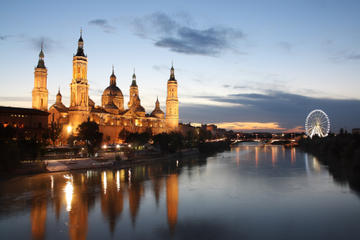 Zaragoza
Zaragoza Connected by high-speed train to both Barcelona and Madrid and straddling the mighty Ebro River, Zaragoza is Spain’s fifth biggest city, equally renowned for its impressive Roman ruins, as its modern shopping complexes and innovative gastronomy. Start your tour of Zaragoza at the central
Zaragoza
Zaragoza Connected by high-speed train to both Barcelona and Madrid and straddling the mighty Ebro River, Zaragoza is Spain’s fifth biggest city, equally renowned for its impressive Roman ruins, as its modern shopping complexes and innovative gastronomy. Start your tour of Zaragoza at the central
-
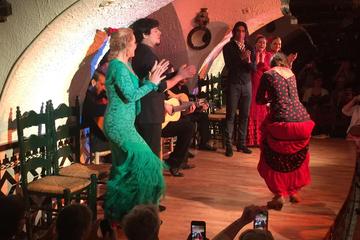 Teatre Poliorama
Teatre Poliorama Opened in 1906 as a part of the Royal Academy of Arts and Science of Barcelona, the Teatre Poliorama continues to be a center of Catalan culture and arts. With around 700 seats, the formerly cinematic theater is a smaller, more intimate venue. Designed by architect Josep Domènech
Teatre Poliorama
Teatre Poliorama Opened in 1906 as a part of the Royal Academy of Arts and Science of Barcelona, the Teatre Poliorama continues to be a center of Catalan culture and arts. With around 700 seats, the formerly cinematic theater is a smaller, more intimate venue. Designed by architect Josep Domènech
-
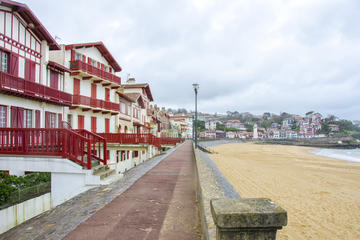 Saint-Jean-De-Luz
Saint-Jean-De-Luz This coastal town between Biarritz and the Spanish border is known for being the site of King Louis XIV’s marriage to Infanta Maria Teresa of Spain in 1660. With a historic port and old town, winding streets, and bright beaches, it remains a popular holiday spot. The harbor is on
Saint-Jean-De-Luz
Saint-Jean-De-Luz This coastal town between Biarritz and the Spanish border is known for being the site of King Louis XIV’s marriage to Infanta Maria Teresa of Spain in 1660. With a historic port and old town, winding streets, and bright beaches, it remains a popular holiday spot. The harbor is on
-
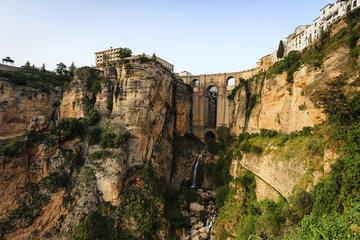 El Tajo Gorge
El Tajo Gorge The gorgeous old Moorish town of Ronda is high in the foothills of the Sierra de las Nieves and was occupied by the Phoenicians and Muslims before the Spanish re-conquered Andalusia in 1485. It teeters precariously atop the El Tajo Gorge, with jaw-dropping views across the rugged cou
El Tajo Gorge
El Tajo Gorge The gorgeous old Moorish town of Ronda is high in the foothills of the Sierra de las Nieves and was occupied by the Phoenicians and Muslims before the Spanish re-conquered Andalusia in 1485. It teeters precariously atop the El Tajo Gorge, with jaw-dropping views across the rugged cou
-
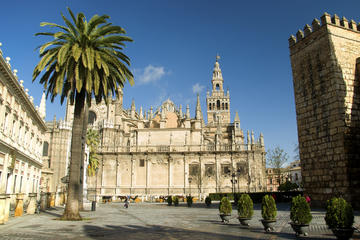 Santa Cruz District
Santa Cruz District Whitewashed buildings, maze-like streets, and courtyards lined with orange trees: No place really defines Seville charm quite like the streets of the Santa Cruz district. As the citys former judería, or Jewish quarter, it is home to many of Sevilles top sights, from the grand c
Santa Cruz District
Santa Cruz District Whitewashed buildings, maze-like streets, and courtyards lined with orange trees: No place really defines Seville charm quite like the streets of the Santa Cruz district. As the citys former judería, or Jewish quarter, it is home to many of Sevilles top sights, from the grand c
-
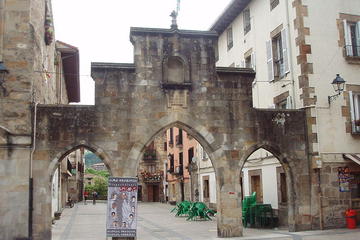 Elorrio
Elorrio The real appeal of the tiny town of Elorrio (population 7,000) is the opportunity to experience rural Basque culture, with a glass of red wine. Surrounded by cool mountains, most the villages classic stone architecture dated from the 16th and 17th centuries, though far older archways and b
Elorrio
Elorrio The real appeal of the tiny town of Elorrio (population 7,000) is the opportunity to experience rural Basque culture, with a glass of red wine. Surrounded by cool mountains, most the villages classic stone architecture dated from the 16th and 17th centuries, though far older archways and b
-
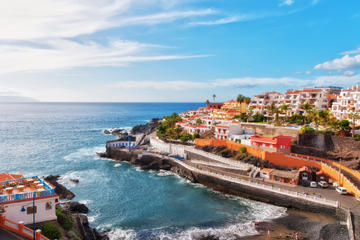 Tenerife Cruise Port
Tenerife Cruise Port The largest of the Canary Islands, Tenerife and its year-round sun, unique volcanic topography and endless sandy beaches draw more than 1 million cruise passengers to the island each year, making it Spain’s second-busiest cruise port after that of Barcelona. How to Get to Tene
Tenerife Cruise Port
Tenerife Cruise Port The largest of the Canary Islands, Tenerife and its year-round sun, unique volcanic topography and endless sandy beaches draw more than 1 million cruise passengers to the island each year, making it Spain’s second-busiest cruise port after that of Barcelona. How to Get to Tene
-
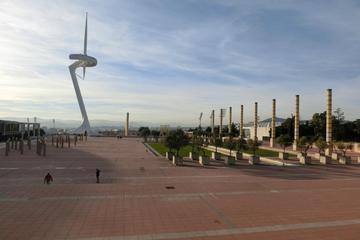 Olympic Stadium
Olympic Stadium The 1992 Olympics were transformative for the city of Barcelona. With the arrival of the games, areas were restored and construction for new structures was initiated. As such, the city was updated and rejuvenated in many ways. One such structure, which remains a draw for visitors t
Olympic Stadium
Olympic Stadium The 1992 Olympics were transformative for the city of Barcelona. With the arrival of the games, areas were restored and construction for new structures was initiated. As such, the city was updated and rejuvenated in many ways. One such structure, which remains a draw for visitors t
-
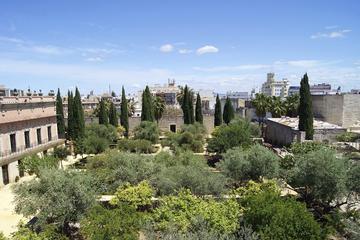 Jerez de la Frontera
Jerez de la Frontera Spanish culture shines bright in the southern city of Jerez de la Frontera. Once inhabited by Romans, Visigoths, Arabs and ultimately Christians, it’s a city now especially famous for three things: flamenco, horsemanship, and Sherry, the internationally known unfortified wine.
Jerez de la Frontera
Jerez de la Frontera Spanish culture shines bright in the southern city of Jerez de la Frontera. Once inhabited by Romans, Visigoths, Arabs and ultimately Christians, it’s a city now especially famous for three things: flamenco, horsemanship, and Sherry, the internationally known unfortified wine.
-
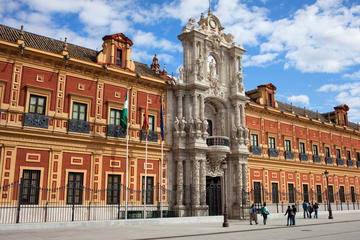 Palace of San Telmo (Palacio de San Telmo)
Palace of San Telmo (Palacio de San Telmo) Today’s it’s the seat of the Andalusian government, but once upon a time, this grand, rusty-red and golden-yellow building served as a royal palace. That wasn’t its original destiny, however: built in the late 1600s, it was meant to serve as a seminary sc
Palace of San Telmo (Palacio de San Telmo)
Palace of San Telmo (Palacio de San Telmo) Today’s it’s the seat of the Andalusian government, but once upon a time, this grand, rusty-red and golden-yellow building served as a royal palace. That wasn’t its original destiny, however: built in the late 1600s, it was meant to serve as a seminary sc
-
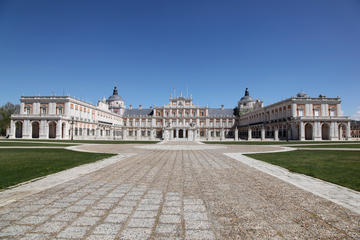 Aranjuez
Aranjuez In the 16th century the royals of Spain liked to take their holidays in Aranjuez, 29 miles (48km) from Madrid. Phillip II developed a small holiday lodge into a magnificent palace, which was given its final majestic appearance by Charles III. The most striking features of the Palacio Real
Aranjuez
Aranjuez In the 16th century the royals of Spain liked to take their holidays in Aranjuez, 29 miles (48km) from Madrid. Phillip II developed a small holiday lodge into a magnificent palace, which was given its final majestic appearance by Charles III. The most striking features of the Palacio Real
-
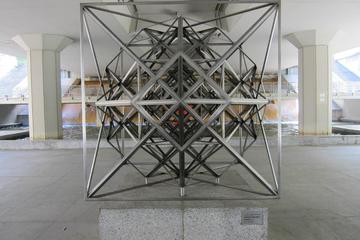 Museum of Public Art
Museum of Public Art Madrid is full of beautiful museums with both classic and modern art on display, but the outdoor Museum of Public Art showcases another side of the Spanish art scene. The open-air museum, uniquely situated under a bridge in the middle of the city, features 17 pieces of abstrac
Museum of Public Art
Museum of Public Art Madrid is full of beautiful museums with both classic and modern art on display, but the outdoor Museum of Public Art showcases another side of the Spanish art scene. The open-air museum, uniquely situated under a bridge in the middle of the city, features 17 pieces of abstrac
-
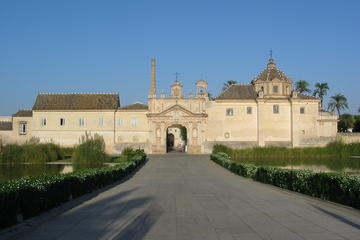 La Cartuja Monastery (Monasterio de la Cartuja)
La Cartuja Monastery (Monasterio de la Cartuja) The church of the Monasterio de la Cartuja is where Spanish late-Baroque hits its lavish heights. It was begun in the 16th century and building continued for another three centuries; it was never completed. The Carthusian monks that lived in the Mona
La Cartuja Monastery (Monasterio de la Cartuja)
La Cartuja Monastery (Monasterio de la Cartuja) The church of the Monasterio de la Cartuja is where Spanish late-Baroque hits its lavish heights. It was begun in the 16th century and building continued for another three centuries; it was never completed. The Carthusian monks that lived in the Mona
-
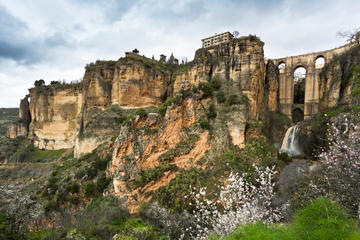 Ronda
Ronda Settled by the Phoenecians around the 7th century BC, later conquered by the Muslims and finally settling under Spanish rule, Ronda has had a long and varied history marked by war, trade, and geographic wonder. Today, most visit the small town of Ronda in order to enjoy is rustic charms, ph
Ronda
Ronda Settled by the Phoenecians around the 7th century BC, later conquered by the Muslims and finally settling under Spanish rule, Ronda has had a long and varied history marked by war, trade, and geographic wonder. Today, most visit the small town of Ronda in order to enjoy is rustic charms, ph
-
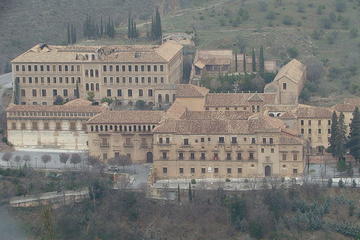 Sacromonte
Sacromonte Sacromonte is traditionally Granadas Gitano quarter, and these days is the epicenter of the citys flamenco-based tourist trade. Spilling down the sides of its hill (the sacred mountain of the name - the district is actually named after the Sacromonte Abbey), the area has been extensivel
Sacromonte
Sacromonte Sacromonte is traditionally Granadas Gitano quarter, and these days is the epicenter of the citys flamenco-based tourist trade. Spilling down the sides of its hill (the sacred mountain of the name - the district is actually named after the Sacromonte Abbey), the area has been extensivel
-
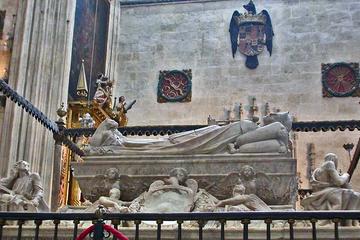 Cathedral and Royal Chapel (Capilla Real)
Cathedral and Royal Chapel (Capilla Real) Situated side by side, the Cathedral and the Royal Chapel (Capilla Real) together make an impressive monument to the power of Christian monarchs. The cathedral was begun in the early 16th century, and even though it didn’t achieve its full intended glory (
Cathedral and Royal Chapel (Capilla Real)
Cathedral and Royal Chapel (Capilla Real) Situated side by side, the Cathedral and the Royal Chapel (Capilla Real) together make an impressive monument to the power of Christian monarchs. The cathedral was begun in the early 16th century, and even though it didn’t achieve its full intended glory (
-
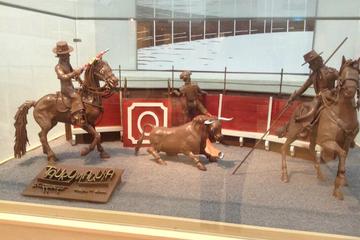 Chocolate Museum (Museu de la Xocolata)
Chocolate Museum (Museu de la Xocolata) This delicious museum tells the story of chocolate across Europe, including its history, trade, manufacturing, and various uses. It traces the origins back to South America, when cacao beans were first brought to Europe by Spanish conquistadores. Since the 1
Chocolate Museum (Museu de la Xocolata)
Chocolate Museum (Museu de la Xocolata) This delicious museum tells the story of chocolate across Europe, including its history, trade, manufacturing, and various uses. It traces the origins back to South America, when cacao beans were first brought to Europe by Spanish conquistadores. Since the 1
-
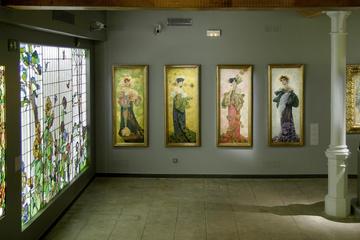 Museu del Modernisme Catala
Museu del Modernisme Catala This small museum is the only one dedicated to displaying Catalan modernisme art. It was converted from a textile factory in 2010, and exhibits some of the finest pieces of art nouveau furniture constructed in Catalunya. Most of the collection comes from two antique dea
Museu del Modernisme Catala
Museu del Modernisme Catala This small museum is the only one dedicated to displaying Catalan modernisme art. It was converted from a textile factory in 2010, and exhibits some of the finest pieces of art nouveau furniture constructed in Catalunya. Most of the collection comes from two antique dea
Total
2732 -travel
FirstPage PreviousPage NextPage LastPage CurrentPage:
13/137 20-travel/Page GoTo Page:
 Basilica Macarena
Basilica Macarena The chief attraction of the Basilica Macarena is La Macarena, or the Virgin of Hope, a 17th century wooden sculpture of Christs mother mourning his death (complete with tears). Shes the patron saint of bullfighters, friend to gypsies and star of the Semana Santa parade held in Se
Basilica Macarena
Basilica Macarena The chief attraction of the Basilica Macarena is La Macarena, or the Virgin of Hope, a 17th century wooden sculpture of Christs mother mourning his death (complete with tears). Shes the patron saint of bullfighters, friend to gypsies and star of the Semana Santa parade held in Se
 Formentor and Puerto Pollensa
Formentor and Puerto Pollensa With its beautiful white-sand beaches framed in picturesque rocky points, Puerto Pollensa (Pollença) has become a magnet for holiday-goers with a taste for the finer things in life. Art museums, galleries, and fine restaurants all offer their pleasures, or simply enjo
Formentor and Puerto Pollensa
Formentor and Puerto Pollensa With its beautiful white-sand beaches framed in picturesque rocky points, Puerto Pollensa (Pollença) has become a magnet for holiday-goers with a taste for the finer things in life. Art museums, galleries, and fine restaurants all offer their pleasures, or simply enjo
 Zaragoza
Zaragoza Connected by high-speed train to both Barcelona and Madrid and straddling the mighty Ebro River, Zaragoza is Spain’s fifth biggest city, equally renowned for its impressive Roman ruins, as its modern shopping complexes and innovative gastronomy. Start your tour of Zaragoza at the central
Zaragoza
Zaragoza Connected by high-speed train to both Barcelona and Madrid and straddling the mighty Ebro River, Zaragoza is Spain’s fifth biggest city, equally renowned for its impressive Roman ruins, as its modern shopping complexes and innovative gastronomy. Start your tour of Zaragoza at the central
 Teatre Poliorama
Teatre Poliorama Opened in 1906 as a part of the Royal Academy of Arts and Science of Barcelona, the Teatre Poliorama continues to be a center of Catalan culture and arts. With around 700 seats, the formerly cinematic theater is a smaller, more intimate venue. Designed by architect Josep Domènech
Teatre Poliorama
Teatre Poliorama Opened in 1906 as a part of the Royal Academy of Arts and Science of Barcelona, the Teatre Poliorama continues to be a center of Catalan culture and arts. With around 700 seats, the formerly cinematic theater is a smaller, more intimate venue. Designed by architect Josep Domènech
 Saint-Jean-De-Luz
Saint-Jean-De-Luz This coastal town between Biarritz and the Spanish border is known for being the site of King Louis XIV’s marriage to Infanta Maria Teresa of Spain in 1660. With a historic port and old town, winding streets, and bright beaches, it remains a popular holiday spot. The harbor is on
Saint-Jean-De-Luz
Saint-Jean-De-Luz This coastal town between Biarritz and the Spanish border is known for being the site of King Louis XIV’s marriage to Infanta Maria Teresa of Spain in 1660. With a historic port and old town, winding streets, and bright beaches, it remains a popular holiday spot. The harbor is on
 El Tajo Gorge
El Tajo Gorge The gorgeous old Moorish town of Ronda is high in the foothills of the Sierra de las Nieves and was occupied by the Phoenicians and Muslims before the Spanish re-conquered Andalusia in 1485. It teeters precariously atop the El Tajo Gorge, with jaw-dropping views across the rugged cou
El Tajo Gorge
El Tajo Gorge The gorgeous old Moorish town of Ronda is high in the foothills of the Sierra de las Nieves and was occupied by the Phoenicians and Muslims before the Spanish re-conquered Andalusia in 1485. It teeters precariously atop the El Tajo Gorge, with jaw-dropping views across the rugged cou
 Santa Cruz District
Santa Cruz District Whitewashed buildings, maze-like streets, and courtyards lined with orange trees: No place really defines Seville charm quite like the streets of the Santa Cruz district. As the citys former judería, or Jewish quarter, it is home to many of Sevilles top sights, from the grand c
Santa Cruz District
Santa Cruz District Whitewashed buildings, maze-like streets, and courtyards lined with orange trees: No place really defines Seville charm quite like the streets of the Santa Cruz district. As the citys former judería, or Jewish quarter, it is home to many of Sevilles top sights, from the grand c
 Elorrio
Elorrio The real appeal of the tiny town of Elorrio (population 7,000) is the opportunity to experience rural Basque culture, with a glass of red wine. Surrounded by cool mountains, most the villages classic stone architecture dated from the 16th and 17th centuries, though far older archways and b
Elorrio
Elorrio The real appeal of the tiny town of Elorrio (population 7,000) is the opportunity to experience rural Basque culture, with a glass of red wine. Surrounded by cool mountains, most the villages classic stone architecture dated from the 16th and 17th centuries, though far older archways and b
 Tenerife Cruise Port
Tenerife Cruise Port The largest of the Canary Islands, Tenerife and its year-round sun, unique volcanic topography and endless sandy beaches draw more than 1 million cruise passengers to the island each year, making it Spain’s second-busiest cruise port after that of Barcelona. How to Get to Tene
Tenerife Cruise Port
Tenerife Cruise Port The largest of the Canary Islands, Tenerife and its year-round sun, unique volcanic topography and endless sandy beaches draw more than 1 million cruise passengers to the island each year, making it Spain’s second-busiest cruise port after that of Barcelona. How to Get to Tene
 Olympic Stadium
Olympic Stadium The 1992 Olympics were transformative for the city of Barcelona. With the arrival of the games, areas were restored and construction for new structures was initiated. As such, the city was updated and rejuvenated in many ways. One such structure, which remains a draw for visitors t
Olympic Stadium
Olympic Stadium The 1992 Olympics were transformative for the city of Barcelona. With the arrival of the games, areas were restored and construction for new structures was initiated. As such, the city was updated and rejuvenated in many ways. One such structure, which remains a draw for visitors t
 Jerez de la Frontera
Jerez de la Frontera Spanish culture shines bright in the southern city of Jerez de la Frontera. Once inhabited by Romans, Visigoths, Arabs and ultimately Christians, it’s a city now especially famous for three things: flamenco, horsemanship, and Sherry, the internationally known unfortified wine.
Jerez de la Frontera
Jerez de la Frontera Spanish culture shines bright in the southern city of Jerez de la Frontera. Once inhabited by Romans, Visigoths, Arabs and ultimately Christians, it’s a city now especially famous for three things: flamenco, horsemanship, and Sherry, the internationally known unfortified wine.
 Palace of San Telmo (Palacio de San Telmo)
Palace of San Telmo (Palacio de San Telmo) Today’s it’s the seat of the Andalusian government, but once upon a time, this grand, rusty-red and golden-yellow building served as a royal palace. That wasn’t its original destiny, however: built in the late 1600s, it was meant to serve as a seminary sc
Palace of San Telmo (Palacio de San Telmo)
Palace of San Telmo (Palacio de San Telmo) Today’s it’s the seat of the Andalusian government, but once upon a time, this grand, rusty-red and golden-yellow building served as a royal palace. That wasn’t its original destiny, however: built in the late 1600s, it was meant to serve as a seminary sc
 Aranjuez
Aranjuez In the 16th century the royals of Spain liked to take their holidays in Aranjuez, 29 miles (48km) from Madrid. Phillip II developed a small holiday lodge into a magnificent palace, which was given its final majestic appearance by Charles III. The most striking features of the Palacio Real
Aranjuez
Aranjuez In the 16th century the royals of Spain liked to take their holidays in Aranjuez, 29 miles (48km) from Madrid. Phillip II developed a small holiday lodge into a magnificent palace, which was given its final majestic appearance by Charles III. The most striking features of the Palacio Real
 Museum of Public Art
Museum of Public Art Madrid is full of beautiful museums with both classic and modern art on display, but the outdoor Museum of Public Art showcases another side of the Spanish art scene. The open-air museum, uniquely situated under a bridge in the middle of the city, features 17 pieces of abstrac
Museum of Public Art
Museum of Public Art Madrid is full of beautiful museums with both classic and modern art on display, but the outdoor Museum of Public Art showcases another side of the Spanish art scene. The open-air museum, uniquely situated under a bridge in the middle of the city, features 17 pieces of abstrac
 La Cartuja Monastery (Monasterio de la Cartuja)
La Cartuja Monastery (Monasterio de la Cartuja) The church of the Monasterio de la Cartuja is where Spanish late-Baroque hits its lavish heights. It was begun in the 16th century and building continued for another three centuries; it was never completed. The Carthusian monks that lived in the Mona
La Cartuja Monastery (Monasterio de la Cartuja)
La Cartuja Monastery (Monasterio de la Cartuja) The church of the Monasterio de la Cartuja is where Spanish late-Baroque hits its lavish heights. It was begun in the 16th century and building continued for another three centuries; it was never completed. The Carthusian monks that lived in the Mona
 Ronda
Ronda Settled by the Phoenecians around the 7th century BC, later conquered by the Muslims and finally settling under Spanish rule, Ronda has had a long and varied history marked by war, trade, and geographic wonder. Today, most visit the small town of Ronda in order to enjoy is rustic charms, ph
Ronda
Ronda Settled by the Phoenecians around the 7th century BC, later conquered by the Muslims and finally settling under Spanish rule, Ronda has had a long and varied history marked by war, trade, and geographic wonder. Today, most visit the small town of Ronda in order to enjoy is rustic charms, ph
 Sacromonte
Sacromonte Sacromonte is traditionally Granadas Gitano quarter, and these days is the epicenter of the citys flamenco-based tourist trade. Spilling down the sides of its hill (the sacred mountain of the name - the district is actually named after the Sacromonte Abbey), the area has been extensivel
Sacromonte
Sacromonte Sacromonte is traditionally Granadas Gitano quarter, and these days is the epicenter of the citys flamenco-based tourist trade. Spilling down the sides of its hill (the sacred mountain of the name - the district is actually named after the Sacromonte Abbey), the area has been extensivel
 Cathedral and Royal Chapel (Capilla Real)
Cathedral and Royal Chapel (Capilla Real) Situated side by side, the Cathedral and the Royal Chapel (Capilla Real) together make an impressive monument to the power of Christian monarchs. The cathedral was begun in the early 16th century, and even though it didn’t achieve its full intended glory (
Cathedral and Royal Chapel (Capilla Real)
Cathedral and Royal Chapel (Capilla Real) Situated side by side, the Cathedral and the Royal Chapel (Capilla Real) together make an impressive monument to the power of Christian monarchs. The cathedral was begun in the early 16th century, and even though it didn’t achieve its full intended glory (
 Chocolate Museum (Museu de la Xocolata)
Chocolate Museum (Museu de la Xocolata) This delicious museum tells the story of chocolate across Europe, including its history, trade, manufacturing, and various uses. It traces the origins back to South America, when cacao beans were first brought to Europe by Spanish conquistadores. Since the 1
Chocolate Museum (Museu de la Xocolata)
Chocolate Museum (Museu de la Xocolata) This delicious museum tells the story of chocolate across Europe, including its history, trade, manufacturing, and various uses. It traces the origins back to South America, when cacao beans were first brought to Europe by Spanish conquistadores. Since the 1
 Museu del Modernisme Catala
Museu del Modernisme Catala This small museum is the only one dedicated to displaying Catalan modernisme art. It was converted from a textile factory in 2010, and exhibits some of the finest pieces of art nouveau furniture constructed in Catalunya. Most of the collection comes from two antique dea
Museu del Modernisme Catala
Museu del Modernisme Catala This small museum is the only one dedicated to displaying Catalan modernisme art. It was converted from a textile factory in 2010, and exhibits some of the finest pieces of art nouveau furniture constructed in Catalunya. Most of the collection comes from two antique dea